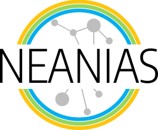The Space Services delivered within NEANIAS WP4 aim at tackling the needs of the Astrophysics and Planetary Science communities in the forthcoming decades. These needs, which arise directly from the expected data deluge caused by new-generation instruments and all-sky surveys, can be mapped into three specific goals:
- Easing the management of astrophysics and planetary data through visualization techniques.
- Processing data from different surveys into large-scale, multidimensional maps and mosaics.
- Automating the detection and characterization of sources and structures in large scale surveys.
An introduction to the innovative services for the Space environment
The thematic services that NEANIAS proposes considers the following:
- S1- FAIR Data Management and Visualization for Complex Data and Metadata: The Space environment shares different needs ranging from management of complex datasets, scientific visualization, visual analytics including combining data analytics and mining with visualization also exposing outputs within advanced interaction environments using virtual and augmented reality. The developed tools and services in Space will be tailored to 2D and 3D model computation, visualization and virtual reality navigation applications.
- S2- Map making and mosaicking for multidimensional images: Space science requires services for making high quality images from the raw data captured by instruments (map making) and for assembling those images into custom mosaics (mosaicing). There are some tools available for the community that are in TRL 6 and will be ported to the EOSC, optimizing the specific features as needed by the relevant scientific groups. Concerning radioastronomy data, interferometric observations, due to the peculiarities of data acquisition, the service will take into account primary beam effects as a weight for data to be mosaiced.
- S3- Structure detection on large map images with machine learning techniques: The currently experienced dramatic increases of Space data volumes make automatic structure detection a necessity. This need will become more and more important due to the continuous increase of data volumes that will need to be analysed. Planetary exploration missions have the constant need for terrain characterization, largely based on orbital remote sensing data. S3 service will be focused on exploiting the existing TRL6 software to perform pattern and structure detection in astronomical surveys as well as in planetary surface composition, topography and morphometry. The service is expected to integrate cutting-edge machine learning algorithms, adopting pre-trained convolutional neural-networks for computer vision tasks (e.g. recognition, segmentation) adapted to the project-specific tasks by means of transfer learning approaches, to perform advanced classification for structures of sources in the sky or planetary surfaces to identify regions of interest.
Achievements, business opportunities and potential beneficiaries
NEANIAS combines existing state-of-the-art software with newly developed solutions to provide astronomers and planetary scientists with tools specifically tailored to their needs.
Currently, the astrophysics community benefits from several tools being integrated into NEANIAS, such as the ViaLactea Visual Analytics and Knowledge Base and the AstraData Navigator for visualization, Montage for map-making and CUTEX and CAESAR for detection of compact sources. Similarly, the planetary science community makes use of existing solutions like Planet Server, ADAM, USGS-ISIS for mosaicking, and NASA-ASP for the generation of cartographic products.
To serve as a guide for future developments and also to refine already implemented tools, NEANIAS has collected the most relevant user requirements from the Astrophysics and Planetary Science communities, which are:
- Analyze and compare maps at different wavelengths, reduced to the same technical features.
- Enhance source and structure finding with Machine-Learning techniques and algorithms.
- Improve software portability and results reproducibility (Open Science approach).
- Homogenize data access into a single integrated system.
- Improve image mosaicking automation.
- Improve detection of landing sites and routes in planetary bodies.
- Improve lithology prediction for exploration planning.
In order to succeed, NEANIAS Space Services have to overcome some specific issues inherent to the nature of astronomical and planetary data and infrastructures. To name a few:
- Harmonization of formats under common standards.
- Reduction of images to same technical features.
- Homogenization of data access.
- Automation of data processing and analysis pipelines.
- Improving of reproducibility.
NEANIAS is a multidisciplinary project from its very conception, that aims at changing the way of working of researchers in the underwater, atmospheric and space sectors. The foreseen Space Services will have an immediate impact in the Astrophysics and Planetary Science communities, by
- speeding up the process of transforming raw data into valuable scientific knowledge.
- leading to breakthrough discoveries in multiple fields (stellar astrophysics, galactic evolution, cosmology, solar system exploration...).
- fostering scientific collaboration in a common 'cloud’ ecosystem.
But, far beyond the research world, the traversal nature of NEANIAS services will enrich the workflows of academic and research institutions, aerospace and telecommunication industrial stakeholders, national space agencies and even outreach bodies.
